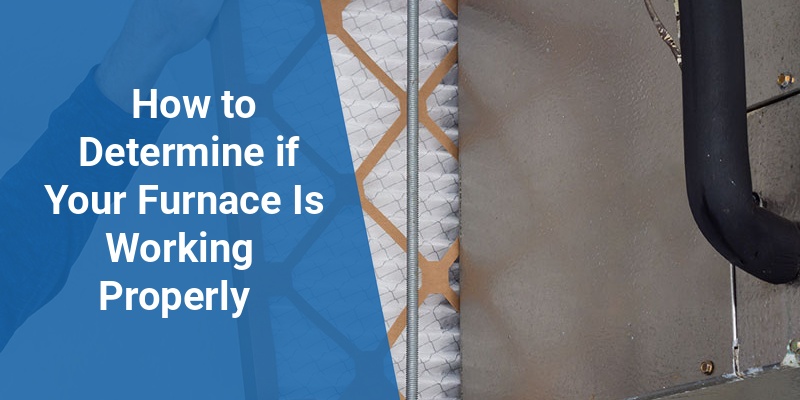Ensuring that your furnace is functioning correctly is essential for maintaining a warm and comfortable home during colder months. Whether you have a gas, electric, or oil furnace, recognizing the signs of proper operation can help you avoid unexpected breakdowns and costly repairs. Monitoring furnace performance involves checking airflow, heat output, sound, and system responsiveness. This article provides a detailed guide to help homeowners and renters identify if their furnace is working efficiently, along with practical tips for troubleshooting common issues.
| Key Indicators | What to Check | What It Means |
|---|---|---|
| Warm Air Output | Feel vent temperature and airflow | Furnace is heating effectively |
| Thermostat Response | Does furnace turn on/off with thermostat | Controls and wiring are functioning |
| Unusual Noises | Listen for banging, rattling, or squealing | Potential mechanical or airflow issues |
| Air Filter Condition | Inspect and replace dirty filters | Improved efficiency and airflow |
| Pilot Light or Ignition | Check flames or electronic igniter | Proper fuel combustion |
Signs Your Furnace Is Working Properly
Warm air blowing from vents is one of the most obvious signs your furnace is operational. When the system is running, place your hand near each air vent to feel for steady, warm airflow. If the air temperature feels significantly cooler or inconsistent, this could be a sign of a malfunction.
The thermostat should reliably control the furnace’s start and stop cycles. When you raise or lower the temperature setting, the furnace should respond quickly and shut off once the target temperature is reached. A furnace that ignores the thermostat signals might have control board or wiring problems.
Another important indicator is the presence of the pilot light in older gas furnaces or the electronic igniter in newer models. The pilot light should burn a steady blue flame; a yellow or flickering flame signals combustion issues that require professional attention. For electric furnaces, check that the heating elements glow or activate properly.
Common Signs Your Furnace Might Not Be Working Correctly
Unusual noises such as banging, squealing, or rattling can indicate mechanical issues like loose belts, motor failures, or airflow restrictions within the ductwork. Persistent strange sounds should prompt immediate inspection to prevent further damage.
Poor airflow, weak heating, or cold spots throughout the house often suggest clogged filters or blocked ducts. Dirty air filters reduce efficiency and strain the furnace, so regular inspection and replacement are crucial for smooth operation.
If your furnace frequently cycles on and off (short cycling), this can point to overheating, thermostat malfunction, or an oversized furnace. Short cycling not only wastes energy but also increases wear and tear.
Call 888-906-9139 for Free Local HVAC Quotes – No Obligation, Just Savings!
Unexplained increases in heating bills or unusual odors such as burning smells could also signal furnace problems. These symptoms warrant professional diagnostic testing to identify safety hazards or inefficiencies.
How to Test Your Furnace Step-by-Step
- Step 1: Check Your Thermostat Settings – Ensure the thermostat is set to “Heat” and the temperature is higher than the current room temperature.
- Step 2: Inspect the Furnace Filter – Remove and examine the air filter. Replace if dirty or clogged to improve airflow.
- Step 3: Turn On the Furnace – Listen carefully for normal operating sounds and watch for any error indicators or flashing lights on the control panel.
- Step 4: Verify Air Temperature – After the furnace runs for about 10 minutes, feel the vents to confirm warm air is blowing consistently.
- Step 5: Examine the Pilot Light or Igniter – For gas furnaces, check that the pilot light is present and a consistent blue flame.
- Step 6: Monitor System Cycling – Confirm that the furnace runs steadily without frequent on/off cycles over brief periods.
When to Call a Professional Technician
If after basic checks the furnace still shows signs of malfunction, it’s important to contact a licensed heating professional. Common issues requiring expert service include:
- Failure to ignite or produce heat despite power and thermostat settings.
- Persistent strange noises or visible error codes on the control board.
- Unexplained high energy bills linked to decreased furnace performance.
- Gas smells, carbon monoxide alarms, or soot around vents, which indicate safety risks.
- Repeated short cycling or uneven heating in different rooms.
Regular furnace maintenance by professionals not only identifies issues early but also improves system longevity and efficiency, ultimately saving money on repairs and utility costs.
Tips to Maintain Your Furnace for Long-Term Performance
Maintaining your furnace ensures consistent heating and prevents breakdowns. Homeowners should follow these best practices:
- Replace or clean air filters every 1 to 3 months depending on usage intensity.
- Keep the area around the furnace clear of dust and debris.
- Schedule annual professional inspections and tune-ups before the heating season.
- Seal air leaks around doors and windows to improve heating efficiency.
- Ensure the thermostat batteries are fresh and the device functions properly.
- Check and clean flues and vents to prevent blockages in combustion air pathways.
Understanding Furnace Types and Their Operation
The signs of a working furnace vary slightly depending on the type of system:
| Furnace Type | Key Operation Indicators | Common Checkpoints |
|---|---|---|
| Gas Furnace | Blue pilot flame, ignitor function, steady warm airflow | Check for gas leaks, flame quality, and venting |
| Electric Furnace | Heating elements glow, steady heating, quiet operation | Inspect heating coils and electrical connections |
| Oil Furnace | Clean combustion, consistent heat, oil supply status | Monitor oil tank level and nozzle function |
Knowing the specific operational traits of your furnace model allows more precise troubleshooting and maintenance.
